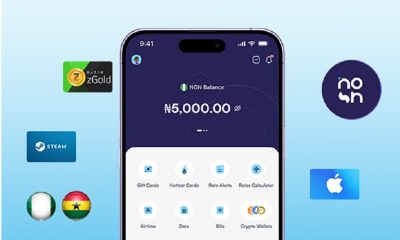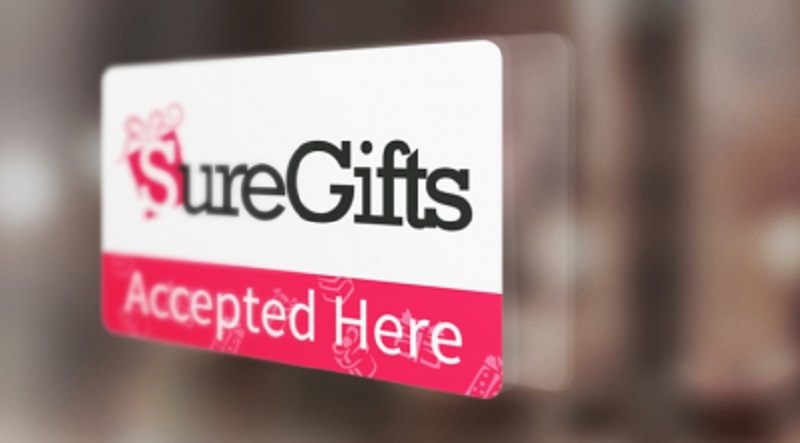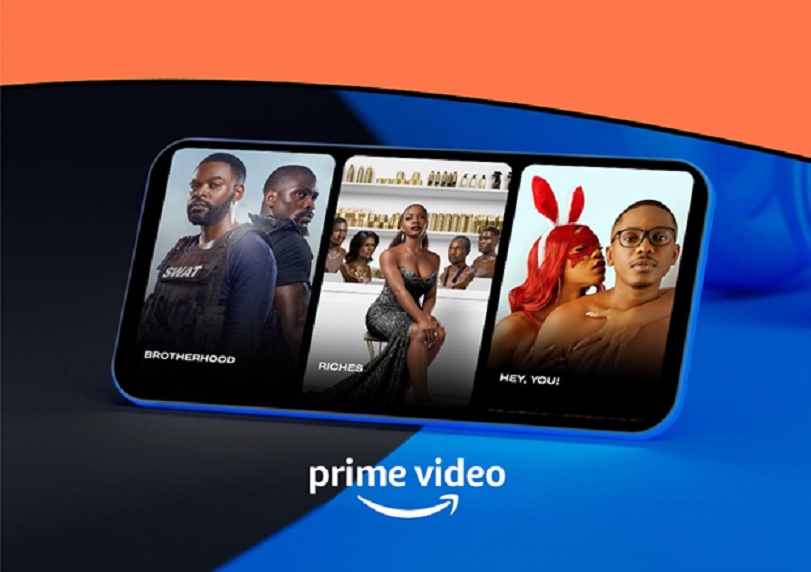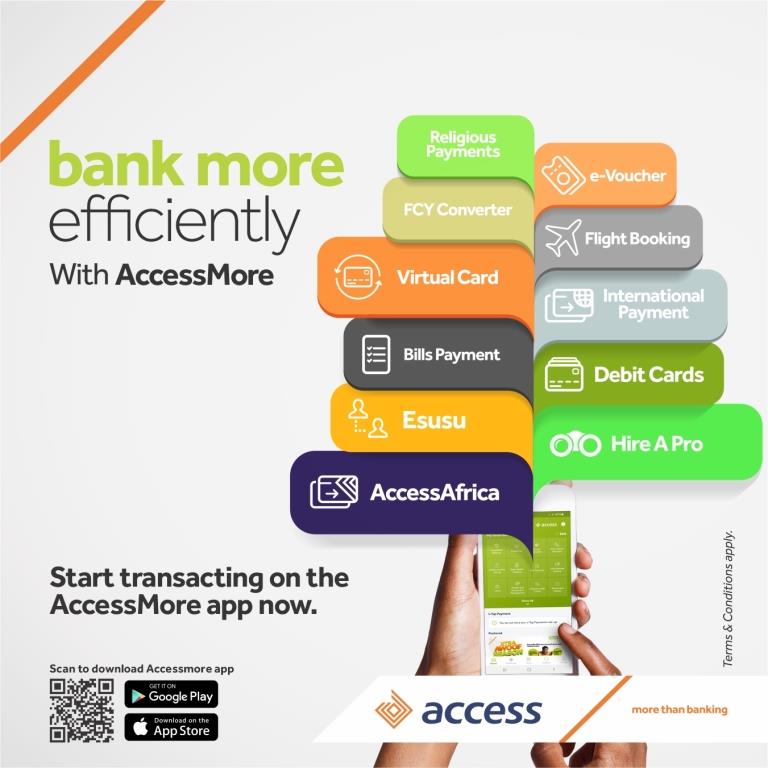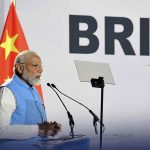Brands/Products
The Best Way to Sell Gift Cards in Nigeria for Cash

If you want to sell gift cards in Nigeria for cash, you’ve stumbled on the right post. In this article, we’ll cover everything you need to know about selling gift cards in Nigeria, the top gift cards with the highest rate, the best platform to sell gift cards, and the best way to sell gift cards in Nigeria for cash without getting ripped.
Before we proceed to guide you on how to sell gift cards in Nigeria for cash, it’ll be good for you to know what gift cards are, how to use them, where to use them and their usability in Nigeria.
What are gift cards used for and why they are invented
Gift cards are payment cards that allow you to gift a loved one without having to carry a physical gift to them or having the trouble of trying to get what they like or want.
Most popular online stores have gift cards associated with them. Platforms like Walmart, Google Play Store, Target, Sephora, iTunes etc have dedicated cards that you can send to loved ones to make choice purchase with instead of you having to worry about how to get the gift and ship it to them.
For example, you can send a loaded Nike or Sephora gift card to someone to purchase items from the respective store based on their choice of an item which is also dependent on the amount on the card.
Types of gift cards
Gift cards can come in two forms. Physical gift cards and virtual cards. Virtual cards are sometimes called e-codes. With a physical card, you can own or send a card that can be used to purchase items from the store where that card originates.
If you want to gift someone who stays far away, you can purchase an e-code instead and just share it with the receiver online to make the purchase of their choice.
Usability of gift cards in Nigeria
You may have relatives or friends abroad who gifted you some gift cards during festive seasons or special occasions. Can be an iTunes card, Amazon gift card, Steam gift card etc. Definitely, there are some of these cards that can be used in Nigeria like iTunes cards.
However, one big issue is no one wants to buy an item for $100 from Amazon using a gift card and pay up to the same amount to ship it to Nigeria.
Sometimes the associated stores aren’t even present or within reach in Nigeria like Sephora. So the only option left for gift card holders is to cash out on them.
Best way to sell gift cards in Nigeria for cash
With the arising issue of having unwanted and unused gift cards at hand, a lot of solutions have sprung up to enable individuals to cash out on their gift cards easily. One of the most popular and safest ways to cash out on your gift cards is to sell them to gift card exchange platforms.
However, one problem with this method even if it is the safest is that there are always scammers and rippers who are just out there to steal your card funds from you for their own benefit. If you want to avoid getting ripped off your card, follow these steps to sell gift cards in Nigeria for cash at a high rate. Fast transaction guaranteed;
- Download Dtunes App: One of the best, tested and trusted platforms to sell gift cards for cash in Nigeria is Dtunes. Dtunes have been around for quite some time and are always the go-to app to sell gift cards for cash in Nigeria for most people.
You can download the Dtunes app from either the Google play store or the Apple App Store depending on your smartphone OS. Below are the links to download the apps.

2. Create An Account | Login: After downloading the app, go ahead to create an account and login into the app. It is a very simple process that will only take few seconds.
3. Add Bank Details and Transaction Pin: Once you log in, you’ll get two pop-ups requesting that you add your bank details which will be used to withdraw your funds and also a transaction pin to make sure your funds are safe on the app and to prevent a third party from withdrawing your funds without your consent.
If you mistakenly close the pop-ups, you can go to settings to set them yourself.
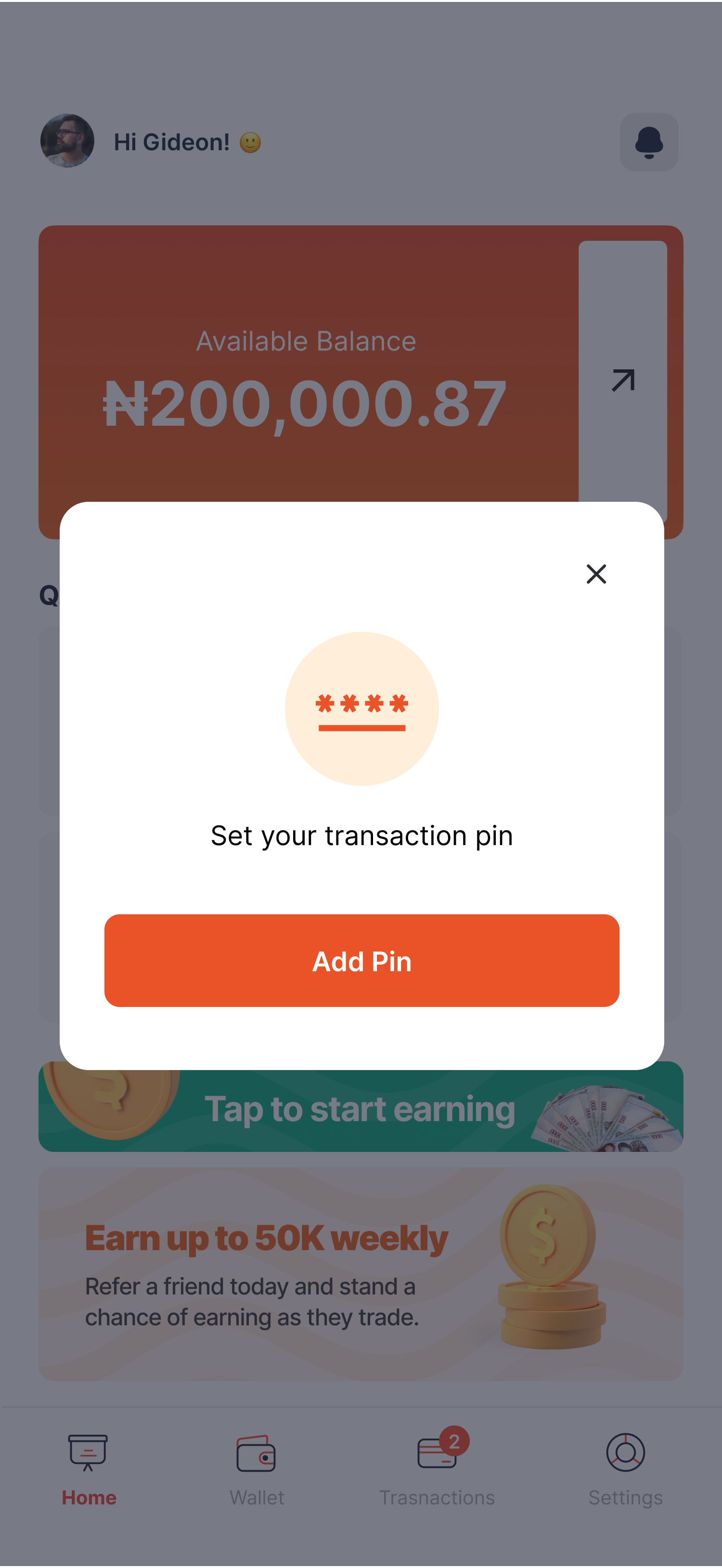

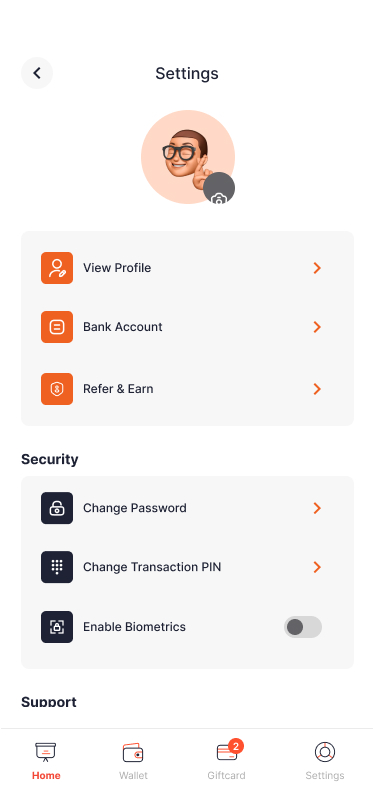
4. On the Home Page Click Trade Gift Card: When you’re done adding all your details, you can now proceed to trade by clicking the home button and then tapping on “Trade Giftcards”

5. Choose The Gift Card To Trade: By tapping “Trade GiftCard” you’ll be directed to a page where you can select the gift card you want to exchange for cash. Go ahead to swipe through or click the drop-down to select your gift card type

6. Fill in card details: After selecting your card type, you’ll need to fill in your card details be it physical card or e-code, the card value, and other details like receipt, debit, no receipt, debit receipt etc.
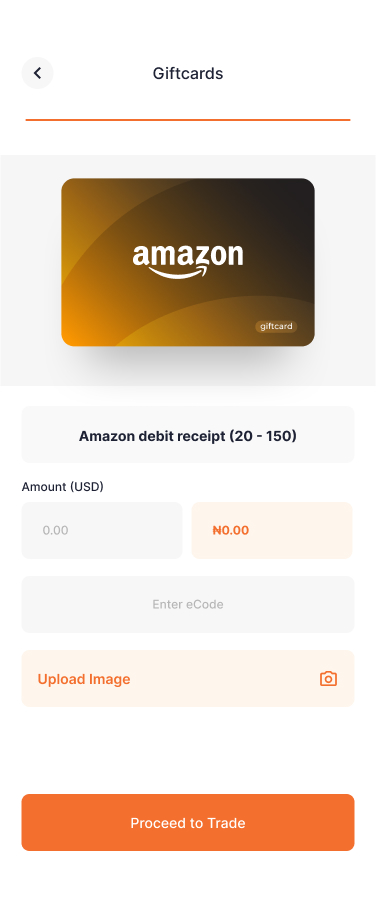
Once you’re done filling in the details, you’ll get to see your card exchange rate.
7. Go ahead to click on proceed: This will take you to another page where you can upload your card info which can be code or an image and also specify the exact amount you want to sell off the card.
8. Once all the details are filled in, you can then submit your card for trade. Once it’s been verified your wallet will be credited and you can proceed to withdraw to your bank account instantly. It is as simple as that.
Now that you know how to exchange your gift cards for cash easily online, you may also want to know which gift card types have the highest exchange rate in Nigeria.

5 Gift cards with the highest rate in Nigeria
In case you’re the type who loves to cash out on gift cards, below are gift cards with the highest rate that you can request to be able to get a good retune in case you decide to sell.
Amazon Gift Card: One of the most well-liked gift cards in Nigeria is the Amazon Gift Card, which also offers a high exchange rate. On the Amazon platform, the card can be used to buy a wide variety of items, including books, gadgets, clothing, and more. You can be confident you’ll get high value for your Amazon gift card on Dtunes.
iTunes Gift Card: The card can be used to buy movies, TV series, music, and other items from the iTunes store. With a high exchange rate and outstanding value, iTunes Gift Cards are a fantastic option for anyone who enjoys entertainment.
Google Play Gift Card: For people who are interested in Android devices and the Android software ecosystem, the Google Play Gift Card is a popular option. The card can be used to buy a variety of Google Play Store products, including applications, games, books, and more. The Google Play Gift Card has a high exchange rate, making it a great option for tech-savvy those who enjoy trying out new games and apps.
Steam Gift Card: One of the greatest gift cards for PC gamers is the Steam Gift Card, which is a common choice among players. On the Steam platform, the card can be used to buy games, DLCs, and other things. Steam Gift Card is a great option for individuals who love to play games and want to play the newest releases. Be assured that you’ll get huge value if you decide to sell the card.
Walmart Gift Card: For people who enjoy shopping and are looking for the best bargains, a Walmart gift card is a fantastic option. Groceries, electronics, household appliances, and other items can all be bought with the card through the Walmart platform. However, since you’re in Nigeria your best bet is to cash out on your walmart gift card. A high rate is sure on walmart gift cards on Dtunes
How to check a gift card’s current rate
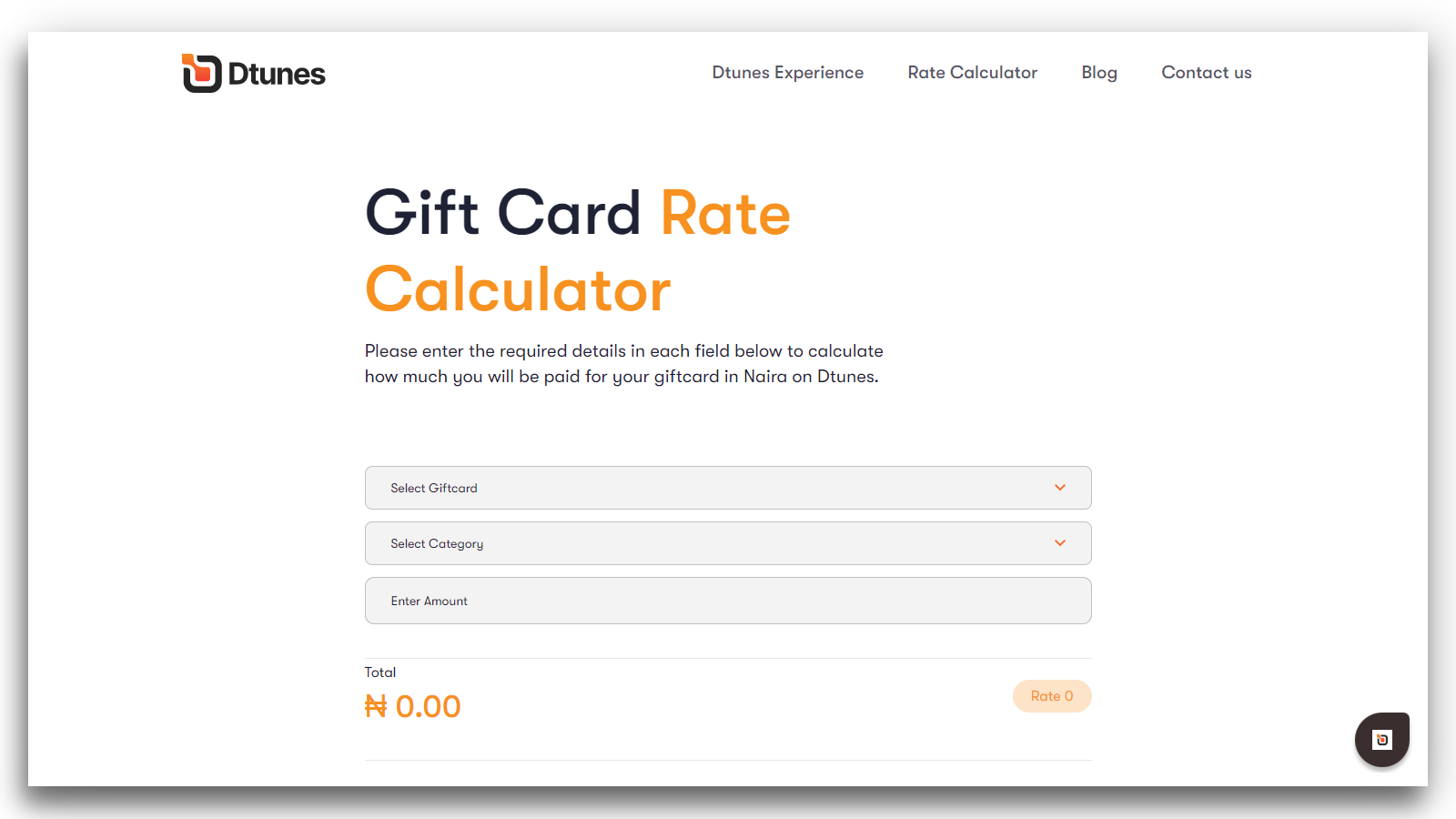
In case you want to be up to date with gift cards rate so you can make better decisions when requesting gifts from your relative abroad, Dtunes have an online calculator you can use for free to check any gift card rate.
Just click Dtunes Gift Card Rate Calculator to check the rate of any card you may want to sell now or later on.
Brands/Products
JMG Installs Solar Power Systems at Three NIPCO Fuel Stations

By Aduragbemi Omiyale
Nigeria’s trusted hybrid and integrated electromechanical energy provider, JMG Limited, has completed the installation of solar power systems at three key fuel stations of NIPCO Plc.
The clean energy source was installed at NIPCO’s petrol dispensing outlets in Gwagwalada Abuja, Lekki Lagos, and Mpape Abuja.
This will help the organisation eliminate diesel reliance, and unlock more than N44 million in annual energy cost savings.
The installations feature advanced hybrid systems, combining solar arrays, lithium battery storage, and smart inverters to provide 24/7 energy for fuel pumps, lighting, and office operations. Each site has reported zero use of electricity or generator power since the systems were installed.
The three NIPCO stations now run on an advanced hybrid solar system that combines high‑efficiency PV panels, intelligent lithium‑battery storage and smart inverters.
Since commissioning, the sites have operated with zero grid or generator power, providing silent, clean, uninterrupted electricity for pumps, lighting and administration.
“We are proud to help NIPCO lead the energy transition at the retail level.
“The scalable architecture can be sized to each location and has already delivered significant savings, about 88,535 kWh/year, N44.4 million in annual cost savings and a 43.8‑tonne reduction in CO₂ emissions,” the Head of JMG’s Hybrid Solar Division, Mr Abbass Hussein, stated, adding that, “Collaborating with NIPCO on this initiative demonstrates a practical pathway for other firms to reduce both emissions and energy expenses.”
Also commenting, NIPCO’s Station Manager at Gwagwalada, Mr Idoko Jacob, said, “The stations have not relied on electricity or generator power on bright-weather days since commissioning. The solar systems fully meet our daily energy needs during such periods. On days with poor weather, we supplement the solar system with generator power to ensure uninterrupted operations.”
Business Post gathered that the NIPCO Gwagwalada Station has a solar output of 42,450 kWh/year, annual savings of N15.6 million, and CO₂ reduction of 15,332.76 kg/year, with a system installed consisting of a 20kW Deye LV Hybrid Inverter, 26.8kWp Solar PV, and 51.2kWh Lithium Battery Storage.
The NIPCO Lekki Station has a solar output of 3,635 kWh/year, annual savings of N12 million, and CO₂ reduction of 13,130.1 kg/year, with a system installed consisting of a 25kW Must Hybrid Inverter, 22.95kWp Solar PV, and 76.8kWh Lithium Battery Storage.
As for the NIPCO Mpape Station, it has a solar output of 42,450 kWh/year, annual savings of N16.8 million, and CO₂ reduction of 15,332.76 kg/year, with a system installed consisting of a 20kW Deye LV Hybrid Inverter, 26.8kWp Solar PV, and 61.44kWh Lithium Battery Storage.
Brands/Products
MAGGI Unveils ‘Taste of Christmas’ Campaign

MAGGI, the culinary brand from Nestlé Nigeria, has announced the launch of its festive campaign, Taste of Christmas, designed to celebrate the sights, sounds, and flavours that define the Nigerian Christmas experience.
Central to the campaign is a collaboration with Nigeria’s fast-rising pop star Qing Madi and the renowned Loud Urban Choir, resulting in a new Christmas anthem titled Taste of Christmas.
Now available across all major music streaming platforms, the song blends contemporary sound with cultural warmth, evoking the joy of family, togetherness, and shared meals that characterize the season.
Extending beyond music, the Taste of Christmas campaign will roll out a curated series of festive recipes and culinary inspiration over a 12-day period. The collection features creative twists such as Coco Bongus, alongside beloved Nigerian classics, encouraging families to explore new flavours while enjoying MAGGI’s trusted range of seasonings.
Commenting on the campaign, the Category Manager for Culinary at MAGGI, Ms Funmi Osineye, said, “Christmas is a time when family, culture, and shared experiences come alive. With the Taste of Christmas campaign, we set out to create a platform that resonates strongly with today’s young adults while still celebrating the warmth of home. Partnering with Qing Madi and The Loud Urban Choir allows us to connect music and food in a way that feels authentic, modern, and deeply Nigerian.”
The campaign further reflects MAGGI’s commitment to celebrating home-grown talent, nurturing culinary creativity, and strengthening the role of food as a unifying force in Nigerian homes.
Consumers can access festive recipes, campaign content, and the Taste of Christmas anthem on MAGGI’s digital platforms and social media channels. Conversations around the campaign can be followed using #MAGGIChristmas.
MAGGI is a leading culinary brand from Nestlé Nigeria, committed to inspiring better cooking habits and bringing families together through delicious, nutritious meals.
Brands/Products
FG Suspension of Sachet Alcohol Ban Excites NECA

By Modupe Gbadeyanka
The decision of the federal government to suspend the ban on alcohol produced in sachets has been welcomed by the Nigeria Employers’ Consultative Association (NECA).
The Director-General of the group, Mr Adewale-Smatt Oyerinde, described it as a right step in the right direction because it respects existing National Assembly resolutions and restores regulatory clarity.
Recall that recently, the Office of the Secretary to the Government of the Federation (OSGF) ordered the suspension of the policy due to concerns raised by the House of Representatives Committee on Food and Drugs Administration and Control.
In a statement, the NECA chief said the immediate suspension of all enforcement actions relating to the proposed ban on sachet alcohol and 200ml PET bottle products, pending the conclusion of consultations and the issuance of a final policy directive, was good for the industry and the economy.
According to him, the sachet and PET segment of the alcoholic beverage industry accounts for a significant portion of the estimated N800 billion invested in the sector and supports thousands of direct and indirect jobs in manufacturing, packaging, logistics, wholesale and retail.
He stressed that in an economy already struggling with high unemployment and rising business costs, abrupt policy measures that threaten existing jobs and legitimate investments would be counterproductive.
“We fully acknowledge the need to address public health concerns, especially regarding children and young people, but the solutions must be evidence-based and carefully designed so as not to drive activities into the informal and unregulated economy or encourage illicit products.
“We are looking forward to a deepened consultation to enable the protection of jobs, livelihoods and legitimate investments, etc., while also ensuring that public health objectives are effectively and sustainably achieved,” Mr Oyerinde said.
-

 Feature/OPED6 years ago
Feature/OPED6 years agoDavos was Different this year
-
Travel/Tourism9 years ago
Lagos Seals Western Lodge Hotel In Ikorodu
-

 Showbiz3 years ago
Showbiz3 years agoEstranged Lover Releases Videos of Empress Njamah Bathing
-

 Banking8 years ago
Banking8 years agoSort Codes of GTBank Branches in Nigeria
-

 Economy3 years ago
Economy3 years agoSubsidy Removal: CNG at N130 Per Litre Cheaper Than Petrol—IPMAN
-

 Banking3 years ago
Banking3 years agoFirst Bank Announces Planned Downtime
-

 Banking3 years ago
Banking3 years agoSort Codes of UBA Branches in Nigeria
-

 Sports3 years ago
Sports3 years agoHighest Paid Nigerian Footballer – How Much Do Nigerian Footballers Earn



